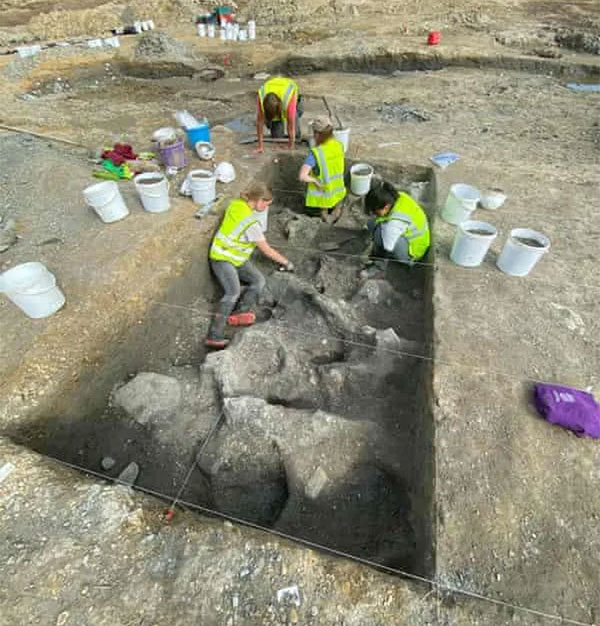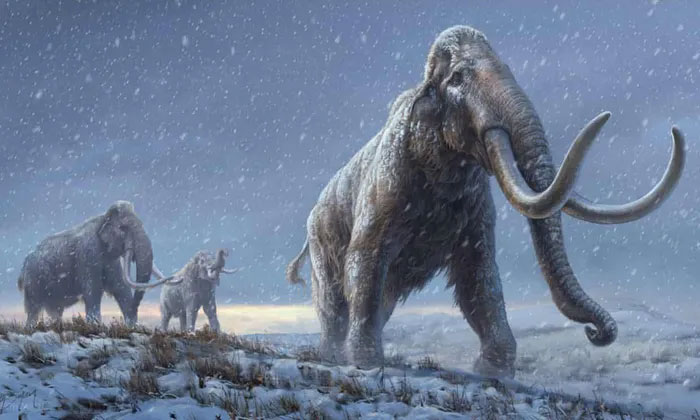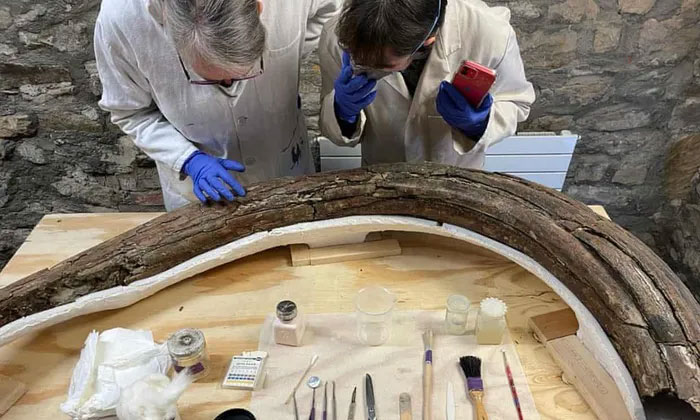Fossils of woolly mammoths from the Ice Age, remarkably preserved, have been discovered in the Cotswolds, astonishing archaeologists and paleontologists.
Historic Discoveries
The massive remains of two adult mammoths, two juveniles, and one infant mammoth that roamed approximately 200,000 years ago were excavated near the town of Swindon, along with tools used by Neanderthals—who likely hunted these 10-ton beasts. More discoveries are expected as this is only a portion of the vast site that has been excavated.
The fossil site is located in a gold mine. It may also include other Ice Age giant creatures, such as moose with antlers over 10 meters long, twice the size of species we see today, as well as smaller creatures, particularly dung beetles. This beetle species evolved alongside the megafauna (large animal group), using their dung for food and shelter. Even seeds, pollen, and plant fossils, including extinct varieties, are being preserved at this site.
All these excavations will now provide new clues about how our Neanderthal ancestors lived under the harsh conditions of Ice Age Britain, a prehistoric era that is little known. Neanderthals, or Neandertals, are an extinct species within the genus Homo, with specimens found in the Pleistocene in Europe and a few locations in Western and Central Asia. Neanderthals are either classified as a subspecies of modern humans or separated into their own distinct species.
Ben Garrod, an evolutionary biology professor at the University of East Anglia, who joined the archaeologists in the excavation, stated: “This is one of the most significant paleontological discoveries in Britain.” Although the unusual skeletons of woolly mammoths are often distorted, finding such complete skeletons is “extremely rare.” “The location of these mammoths in the ground is precisely where they died a quarter of a million years ago, alongside incredible items like stone tools and the shells they trampled underfoot,” the professor emphasized.

Archaeologists excavating mammoth bones. (Photo: DigVentures).
“These little details have truly revealed the context of these iconic giant creatures. It is a glimpse back in time. This is extremely important for our understanding of how climate change has impacted the environment, ecosystems, and animal species.”
Lisa Westcott Wilkins from DigVentures, a social enterprise in archaeology, remarked: “Archaeological sites from this period are very rare and crucial for understanding Neanderthal life across Britain and Europe. Why did so many mammoths die here? Could Neanderthals have hunted them? What can they tell us about life in Ice Age Britain?”
Evidence of Prehistoric Earth
Researchers believe that the mammoth remains and artifacts date back approximately 220,000 years, when Britain was still inhabited by Neanderthals during a warmer interglacial period known as MIS7. The drop in temperature forced Neanderthals to migrate south, and this site later became a lush, fertile plain where both animals and humans lived.
The earliest mammoths arrived around 5 million years ago from Africa. The steppe mammoth is the largest among them, existing from about 1.8 million years ago until about 200,000 years ago.

Illustration of a woolly mammoth from the Ice Age. (Photo: Beth Zaiken / Reuters).
Steppe mammoths weighed up to 15 tons, two to three times the weight of an African elephant. This was the largest mammoth species ever, although over time, they shrank to about 10 tons. This may have been an adaptation to changing environmental conditions, climate, and resource availability. At that time, the climate was getting colder, resources were becoming scarcer, leading to a gradual decline in species.

Paleontologists carefully examining excavated bones, some of which may show signs of butchering. (Photo: DigVentures).
Speculating on why so many animals died at this site, Professor Garrod added: “Was it a massive ice flood that swept these unfortunate animals away? Were they hunted by Neanderthals? Everything is possible. There must be some connection between a hand axe and other stone tools alongside these skeletons.”
The excavations also revealed further evidence of Neanderthal activity in the area, including flint tools that would have been used for skinning fresh hides. Some of the skeletons may show signs of butchering.


















































